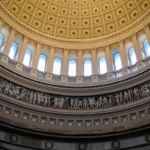Intellectual Property Case Law: Protecting Digital Innovations

In today’s digital age, innovation is often synonymous with technology. From software applications to digital art, the internet has become a fertile ground for creativity, giving rise to new industries, business models, and intellectual property (IP) challenges. As these innovations rapidly develop, the legal landscape must evolve to ensure that creators, entrepreneurs, and organizations can protect their digital innovations.
The Role of Intellectual Property in the Digital Age
Intellectual property law encompasses patents, copyrights, trademarks, and trade secrets, each serving to protect different forms of innovation. As the world becomes increasingly digital, IP law must adapt to emerging technologies, such as cloud computing, artificial intelligence (AI), blockchain, and digital content creation. These innovations often present novel challenges to traditional IP frameworks, prompting courts and lawmakers to re-evaluate existing legal principles.
The following are notable case law developments in the realm of digital innovation protection.
Google Inc. v. Oracle America, Inc. (2021)
Significance: The Google v. Oracle case focused on whether Google’s use of Oracle’s Java programming language in Android violated Oracle’s copyright.
- Ruling: The U.S. Supreme Court ruled in favor of Google, determining that its use of Oracle’s Java code in Android was a fair use of the copyrighted work. This landmark decision emphasized the importance of fair use in fostering innovation and development, particularly in the technology sector.
- Impact on Policy: The ruling highlighted the tension between protecting copyright holders and promoting technological advancement. In this case, the Court’s decision underscored the critical role of fair use in enabling new software development and fostering competition in the tech industry. This case is especially important for companies that develop software or create digital tools based on existing code or platforms.
Apple Inc. v. Samsung Electronics Co. (2012-2016)
Significance: This high-profile case focused on the protection of design patents and whether Samsung’s smartphones infringed on Apple’s patents for the design of its iPhone.
- Ruling: The legal battle involved several rounds of litigation, with courts ultimately ruling that Samsung had infringed Apple’s design patents. The decision required Samsung to pay a substantial amount in damages, with the final figure determined in 2016.
- Impact on Policy: This case drew attention to the importance of design patents in the technology sector, where companies increasingly rely on product aesthetics and user interface design as part of their competitive advantage. The case set a precedent for how courts should approach design patent infringement, reinforcing the need for companies to protect the unique visual elements of their products. Additionally, it sparked a broader debate about patent “trolls” and whether patent infringement claims are used strategically to stifle competition.
Association for Molecular Pathology v. Myriad Genetics, Inc. (2013)
Significance: This case addressed whether human genes could be patented, specifically focusing on the BRCA1 and BRCA2 genes, which are associated with breast cancer susceptibility.
- Ruling: The Supreme Court ruled that naturally occurring human genes cannot be patented, but synthetically created DNA (cDNA) could be eligible for patent protection.
- Impact on Policy: The ruling dramatically changed the landscape of biotech patents and the protection of digital innovations in healthcare. It confirmed that natural genetic sequences are not patentable, promoting access to genetic research and testing. However, it also acknowledged the potential for IP protection in genetic research involving synthetic genes, opening the door to new innovations in biomedicine and biotechnology. This decision has broad implications for how IP law interacts with emerging technologies in healthcare and life sciences.
Aereo, Inc. v. American Broadcasting Companies, Inc. (2014)
Significance: This case involved Aereo’s service, which allowed users to stream broadcast television signals over the internet. The legal question was whether Aereo’s use of digital technology to retransmit broadcasts violated copyright laws.
- Ruling: The Supreme Court ruled that Aereo’s service was infringing on copyright because it effectively “retransmitted” broadcast television signals without proper licensing.
- Impact on Policy: The case addressed the intersection of copyright law with emerging digital technologies. While the Court’s decision was a blow to Aereo, it reinforced the importance of copyright protection for broadcast content in the digital age. This case has ongoing implications for streaming platforms, digital broadcasters, and content providers, highlighting the necessity of adapting existing IP laws to regulate digital content distribution models.

Evolving Digital IP Protection
As digital innovations continue to shape our world, intellectual property law must keep pace with new technologies, business models, and societal needs. The cases discussed above illustrate the pivotal role of IP case law in shaping the policies that govern digital innovation, from patent protection to copyright enforcement and the safeguarding of trade secrets.
For businesses and creators navigating the digital landscape, understanding these cases and the policies they influence is crucial for protecting their intellectual property. By keeping abreast of emerging trends in IP law, companies can better defend their innovations while contributing to the dynamic and rapidly evolving digital economy.
As technology continues to advance, the law will undoubtedly be tested by new challenges in the digital space. Courts and policymakers must strike a balance between protecting the rights of creators and fostering innovation to ensure that digital advancements continue to thrive.
Stay up to date on digital intellectual property law with Continuing Education of the Bar (CEB)
CEB provides a range of online services designed to enhance legal practice, including Practitioner, CEB’s all-in-one legal research solution with authoritative practice guides. Practitioner is meticulously crafted by California lawyers for California lawyers, providing comprehensive insights and resources tailored to your specific needs. All practice guides seamlessly integrate with CEB’s primary law research tool, empowering you to delve into California, Ninth Circuit Court of Appeals, and U.S. Supreme Court case law, alongside California statutes and the California Constitution. As part of the Practitioner subscription, you gain access to DailyNews, ensuring you stay updated on any critical new cases or developments in your field. And don’t forget, Practitioner also includes TrueCite®, CEB’s powerful case law citator, enhancing your research efficiency and accuracy.
Our tools offer unparalleled support in case law research, legal analysis, and staying updated with the latest judicial decisions. By choosing CEB, you gain access to a wealth of knowledge, enabling you to navigate complex legal landscapes with confidence and precision.
Read more related content
- California’s Proposed Antitrust Crackdown: SB 763 Penalties Could Jump from $1 Million to $100 MillionCalifornia’s Proposed Antitrust Crackdown: SB 763 Penalties Could Jump from $1 Million to $100 Million A $1 million penalty for California corporations found guilty of criminal antitrust charges could soon … Continued
- California Wildfire Legal Response: Executive Orders, CEQA Exemptions, and Rebuilding GuidelinesCalifornia Wildfire Legal Response: Executive Orders, CEQA Exemptions, and Rebuilding Guidelines The Los Angeles and Ventura County wildfires are, first and foremost, a human tragedy, displacing families, devastating communities and … Continued
- Navigating the Litigation Process in California: A Practitioner’s Handbook Litigation in California can be a complex and time-intensive process, requiring legal practitioners to have a thorough understanding of procedural rules, case law, and effective legal strategies. Whether representing plaintiffs … Continued



